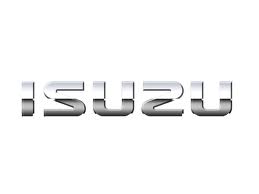VehiCROSS 4WD V6-3.5L (1999)

2. Inlet/outlet section of condenser.
3. Inlet/outlet section of receiver driver.
4. Inlet section of cooling unit.
Low Pressure Side
1. Outlet section of cooling unit.
2. Intake section of compressor.
Major Checking Points of Refrigerant Leak Compressor
- Pipe connection
- Sealing section of shaft
- Mating section or cylinder Condenser
- Pipe connection
- Welds of condenser body
Receiver driver
- Pipe connection
- Attaching section of pressure switch
- Section around the sight glass Evaporator unit (cooling unit)
- Pipe connections
- Connections of expansion valve
- Brazed sections of evaporator
NOTE: The evaporator and expansion valve are contained in the case. Remove the drain hose or the resistor of the cooling unit and insert a leak
detector when checking for any leak.
Flexible hose
- Pipe connection
- Caulking section of the hose
- Hose (cracks, pinholes, flaws)
Pipe
- Pipe connection
- Pipe (cracks, flaws) Charge valve
NOTE:
- The charge valve, which is used to connect the gauge manifold, is normally provided with a resin cap. When the valve inside gets deteriorated,
refrigerant will leak out.
Leak at Refrigerant Line Connections
1. Check the torque on the refrigerant line fitting and, if too loose, tighten to the specified torque.
- Use two wrenches to prevent twisting and damage to the line.
- Do not over tighten.
2. Perform a leak test on the refrigerant line fitting.
3. If the leak is still present, discharge and recover the refrigerant from the system.
4. Replace the O-rings.
- O-rings cannot be reused. Always replace with new ones.
- Be sure to apply the specified compressor oil to the new O-rings.
5. Retighten the refrigerant line fitting to the specified torque.
- Use two wrenches to prevent twisting and damage to the line.
6. Evacuate, charge and retest the system.
Leaks In The Hose
If the compressor inlet or outlet hose is leaking, the entire hose must be replaced. The refrigerant hose must not be cut or spliced for repair.
1. Locate the leak.
2. Discharge and recover the refrigerant.
3. Remove the hose assembly.
- Cap the open connections at once.
4. Connect the new hose assembly.
- Use two wrenches to prevent twisting or damage to the hose fitting.
- Tighten the hose fitting to the specified torque.
5. Evacuate, charge and test the system.
Compressor Leaks
